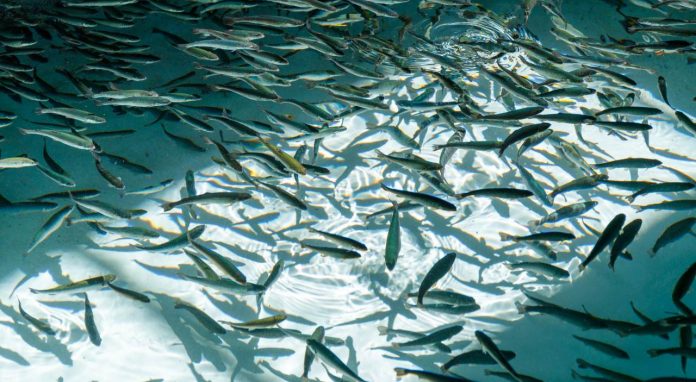
The Page Springs Fish Hatchery, operated by the Arizona Game & Fish Department, is back to normal business after clearing an invasion of New Zealand mudsnails detected in the fall.
The Page Springs Fish Hatchery is Arizona Game & Fish’s largest hatchery, raising about 57% of the state’s stock trout, according to the hatchery’s website.
The detection of the invasive snails led to a three-month quarantine at the hatchery while Game & Fish personnel used a copper sulfate treatment to kill the tiny snails in the system without killing the fish.
According to the University of California, Riverside’s Center for Invasive Species Research, New Zealand mudsnails are believed to displace native invertebrate species, reducing available food for species further up the food chain.
The National Park Service reports that New Zealand mudsnails have been found in seven Western states. In Arizona, mudsnails have been confirmed in the Colorado river, according to NPS, up to 225 miles downstream from the Glen Canyon Dam.
The Page Springs Fish Hatchery’s trout were not harmed by the treatment, but the fish had to be held back for longer than usual in the hatchery’s raceways — long holding tanks with a continuous water flow — to ensure the facility and the fish were not harboring any stowaway mudsnails. The three-month stoppage in stocking from the hatchery led to some disruption in Game and Fish’s stocking schedule.
“We did the best we could to buy fish from other places and other hatcheries that had some excess fish that we were able to pull off to go to some of these sites,” Game & Fish’s Aquatic Wildlife Branch Chief Chris Cantrell said. “We did the best that we could to try to make sure that fish were getting to all the locations, but we did have some effects where either stocking numbers were lower, or some sites just didn’t get stocked until almost February.”
Cantrell said that the agency believes the mudsnails got into the raceways by hitching a ride on one of the trout predators that figured out how to sneak into the raceway area during the day to grab a fish. The gates to the covered raceway area were previously left open during open hours so visitors could peruse the raceways on their own.
“Predatory birds, like herons, wildlife, like raccoons and otters, [would] occasionally get in to feed on our trout. In many cases during the day we left our gates open for public tours just to walk through and see the fish in those raceways. And we suspect that, just as many wildlife do, they get very creative and careful and figured out, ‘OK, when nobody’s around I’m going to sneak in and get a meal,’” Cantrell said.
The invasion has led to some changes in protocol at the hatchery intended to reduce the chances of invasive species getting into the trout raceways. One of those changes is that the raceways will no longer be accessible for unguided viewing, but guided tours will be offered, Cantrell said. Other parts of the hatchery are open as usual, including the show pond, trails and visitor center.
Cantrell is pleased with the success of the treatment used to eliminate the mudsnails, and he said there is a silver lining to the fish quarantine for anglers.
“Because we held a lot of fish back, we have a lot of fish that are going off station and they’re beautiful fish. They were raised for at least another couple months, putting on a little bit more sizing, so they’re really nice quality fish that are coming out. Dead Horse [Ranch] State Park, Prescott area, Verde River, Oak Creek are all getting these beautiful fish, and so it’s really a great opportunity for folks … to take some nice quality fish now that we have excess and some of the stocking loads are a little bit more full than what we would normally stock,” Cantrell said.


















